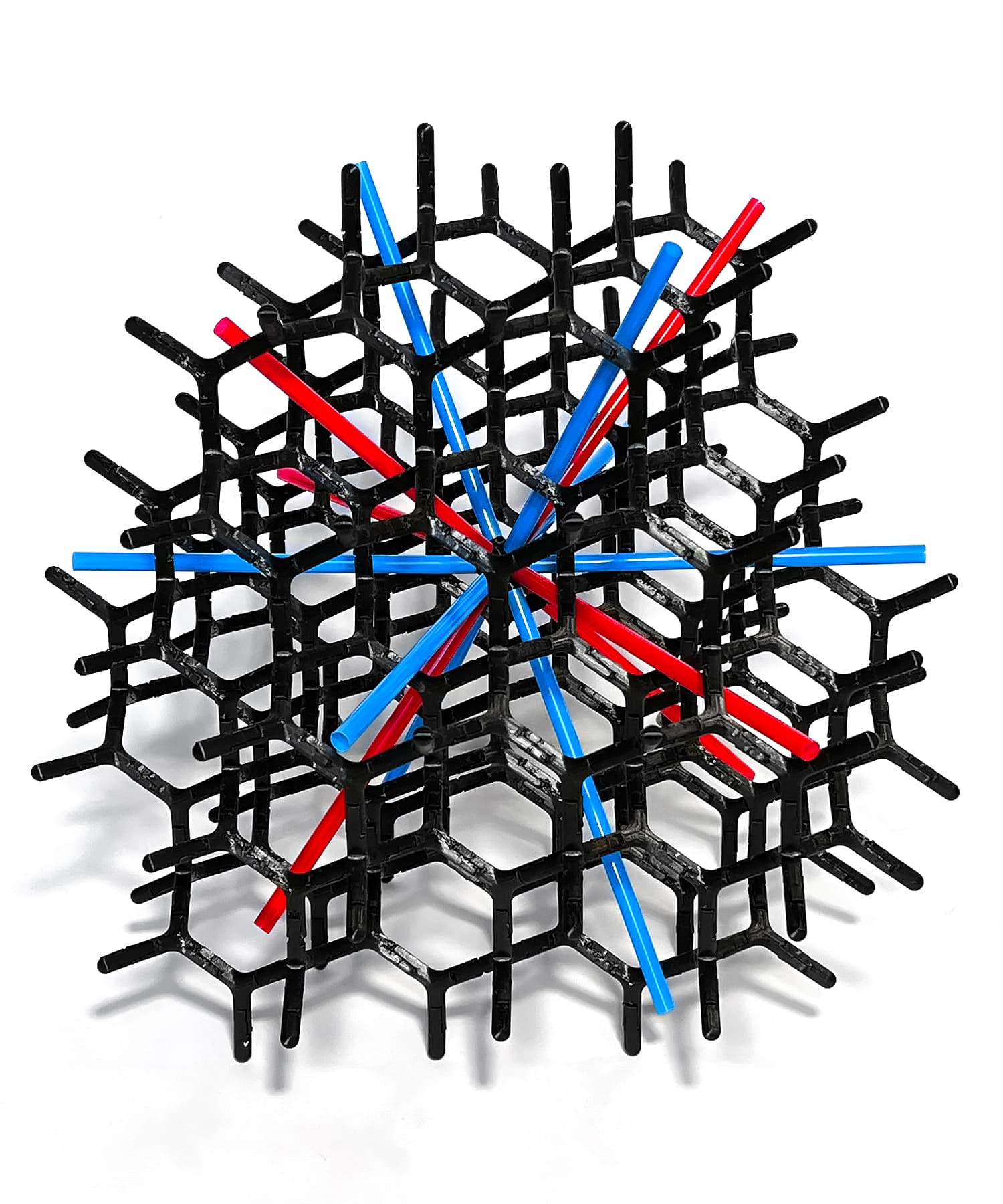2023 Joint Mathematics Meetings
Jared Pincus
Artists
Jared Pincus
Doctoral Student of Computer Science
Boston University
Boston, Massachusetts, USA
Statement
I am a PhD student in computer science, an aspiring professor, and a dabbler in recreational math, game design, and graphics. I learned of the Trihelical Square Tiling (TST) via Mitch Halley, who also coined its name [youtu.be/_hjRvZYkAgA]. Mesmerized by the TST's structure, I sought to visualize it with a physical model. The TST, formally $\{\infty,3\}^{(b)}$, is a regular apeirohedron comprised of square helices spiraling in 3 orthogonal directions. Its Petrial, $\{\infty,3\}^{(a)}$, consists of triangular helices spiraling in 4 directions. These 7 axes match the 7 pairs of faces of a cuboctahedron. Certain crystal lattices, namely strontium silicide, naturally conform to the TST’s structure [arxiv.org/abs/1403.0045].
Artworks

Trihelical Square Tiling
28 x 32 x 28 cm
3D-printed PLA, plastic straws
2022